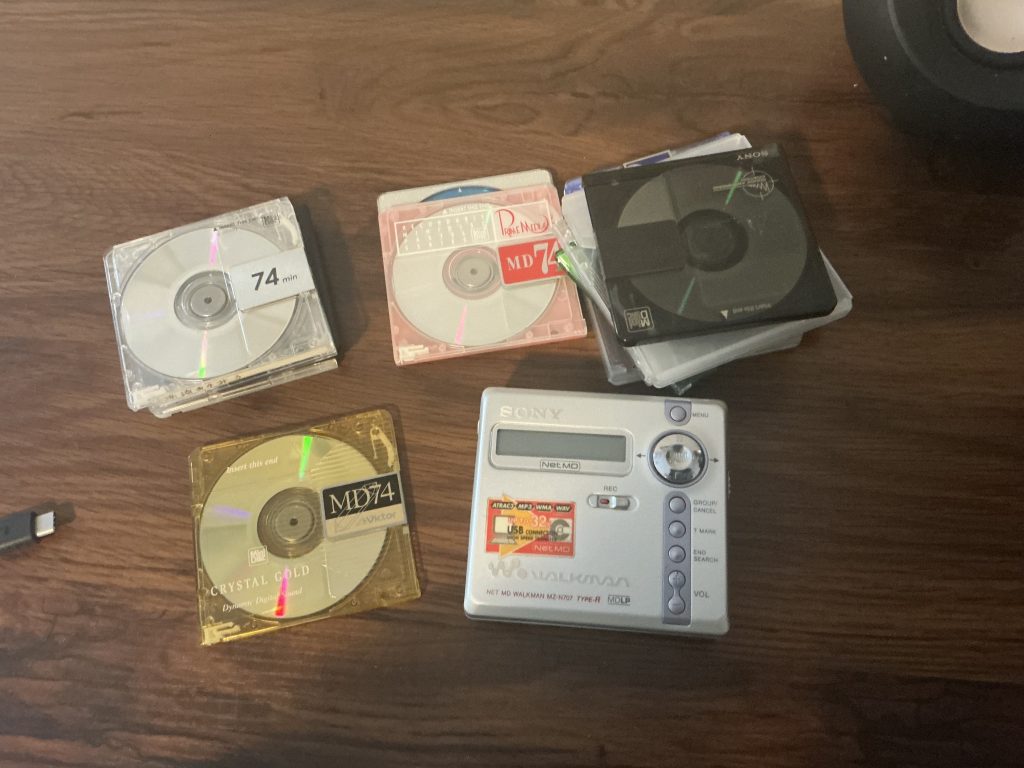After discovering that there’s modern software that supports NetMD, I found myself acquiring something few people want anymore. Also, it’s my first Walkman since portability had more in common with books than floppy disk. I was always fascinated by MiniDisc, but they were never really a thing where I grew up–and now they’re basically thrift store material.

In terms of audio quality, at SP, it’s definitely close enough to CD quality that I can’t complain. In LP2 mode, it’s certainly no worse than the older MP3s in my music collection. While I don’t consider LP4 to have enough bits for more than a Bluetooth microphone (and an old crap one at that), I’ll admit that the few samples I’ve encountered sound just fine. Being second hand, several of the discs had music already in various SP/LP2/LP4 combinations.
The battery life is also pretty impressive. Playback time is forget about it off one of my eneloop AA rechargeable, most of which have about 4-years of charge cycles between game controllers and other small peripherals. Only thing that really seems to put a real ding in it is recording, since SP record uses the recorder’s own ATRAC3 codec rather than the PC.
Using LP2 may actually be worth it, since that appears to do the encode on PC, resulting in a lot more write speed. The Walkman’s codec is probably a higher quality than what comes bundled with ElectronWMD, but it is still a twenty year old chip.
Encoding at SP seems to run about 2/3 to 1/2 of real time, which isn’t great since we’re talking about 20-40 minutes an album. Minutes per track. By contrast, throwing my laptop’s processing power at the problem, it’s seconds per track. In terms of disc runtime, 74-80 minutes at SP is on par with CD and the 140-160 minutes or so at LP2 will usually fit longer albums this side of ‘not made for physical release,’ but I’ll admit, encoding time seems to be a bigger factor than audio quality. ATRAC3/LP2 is actually a lot better than I expected.
In any case, I do have to admit, it’s a lot nicer to do File Server -> Laptop -> Walkman than it ever was dubbing to cassette on my mom’s stereo 🙂